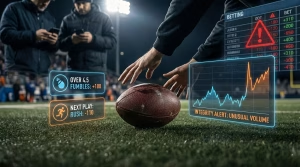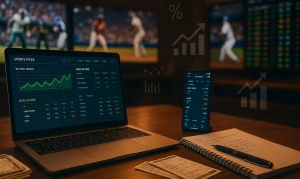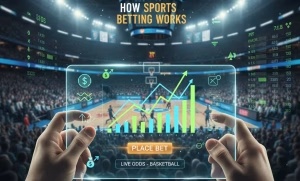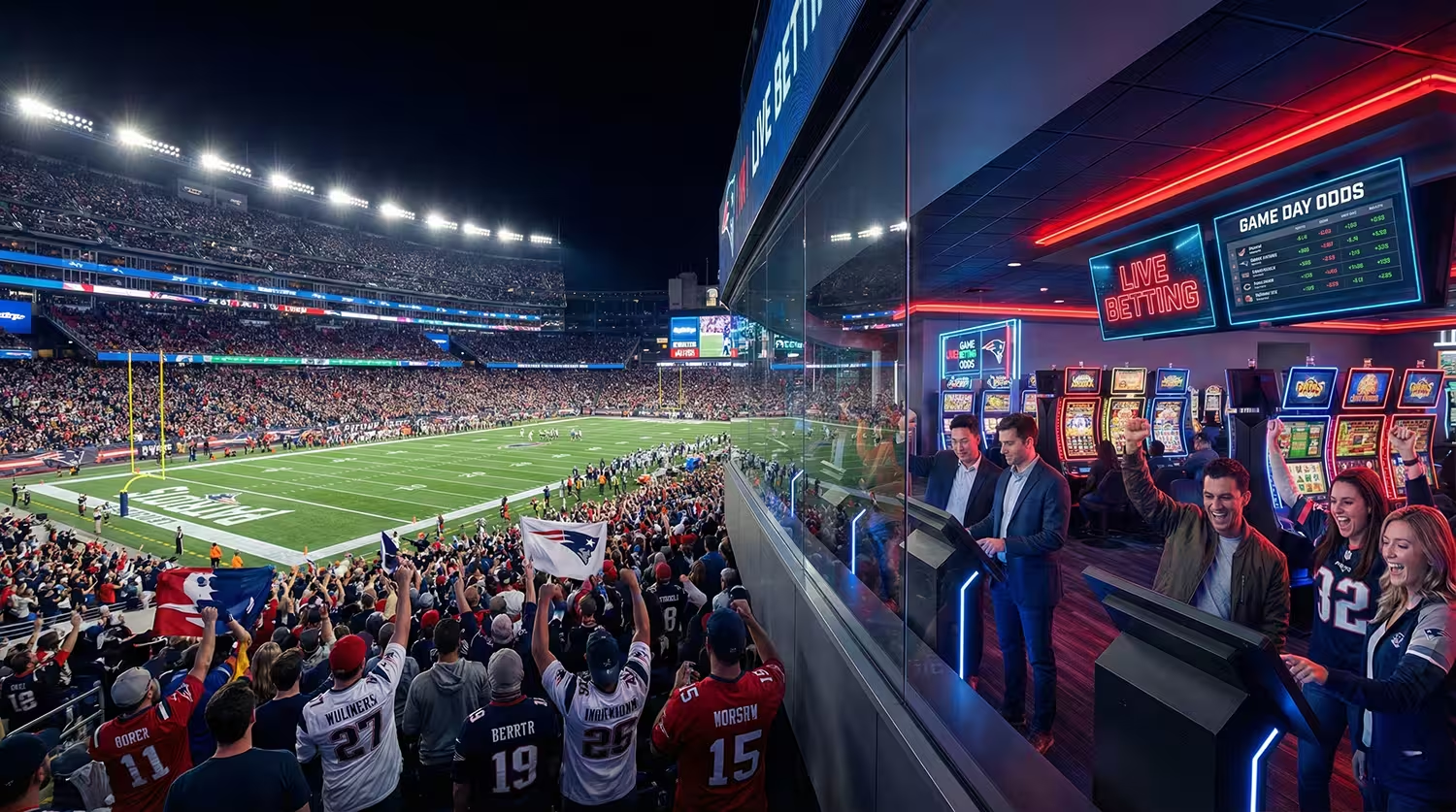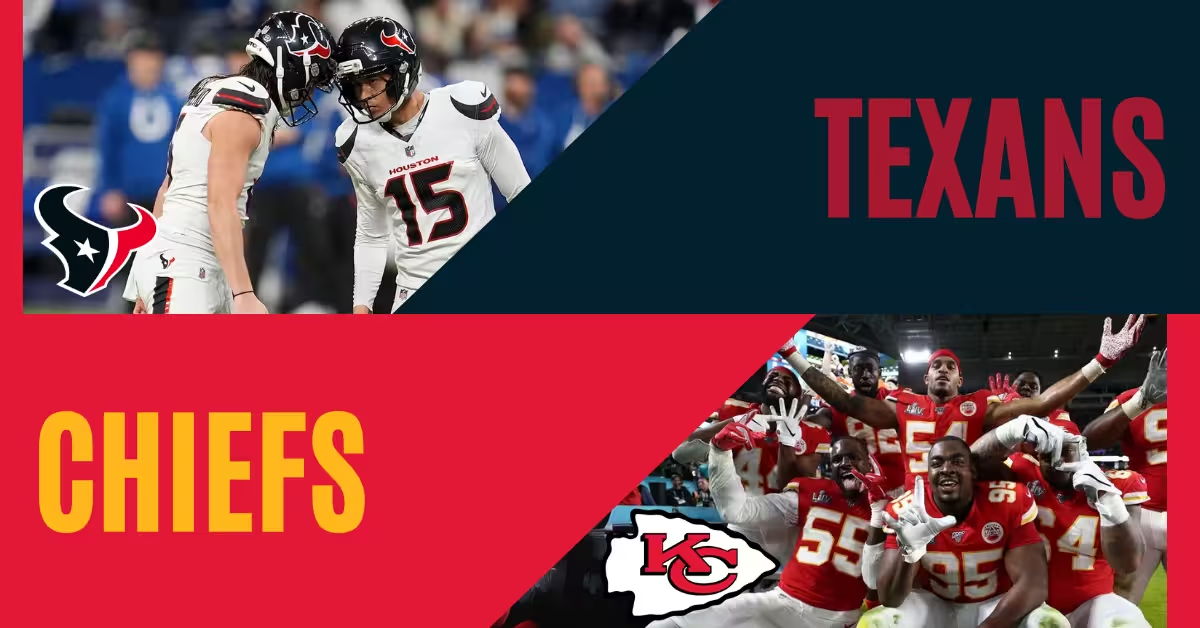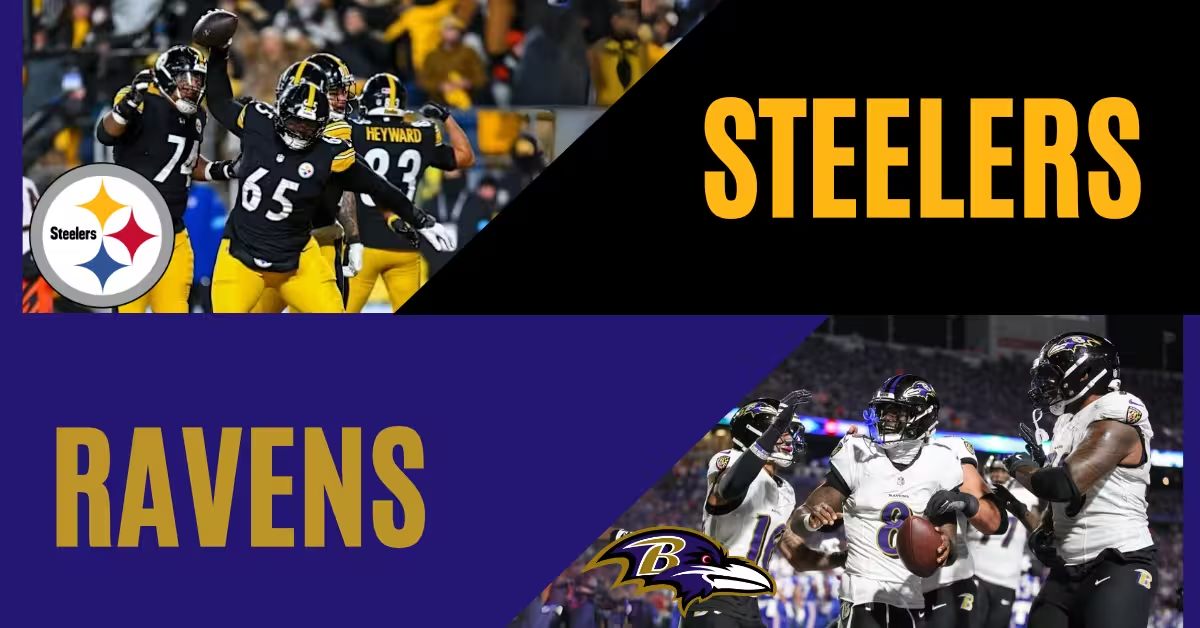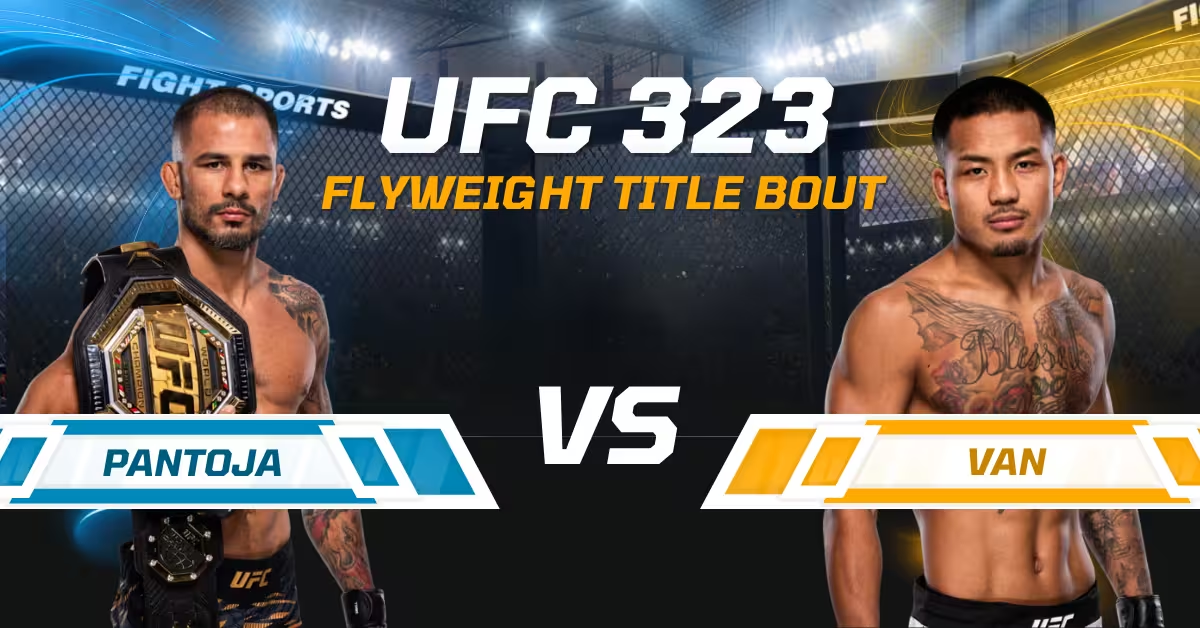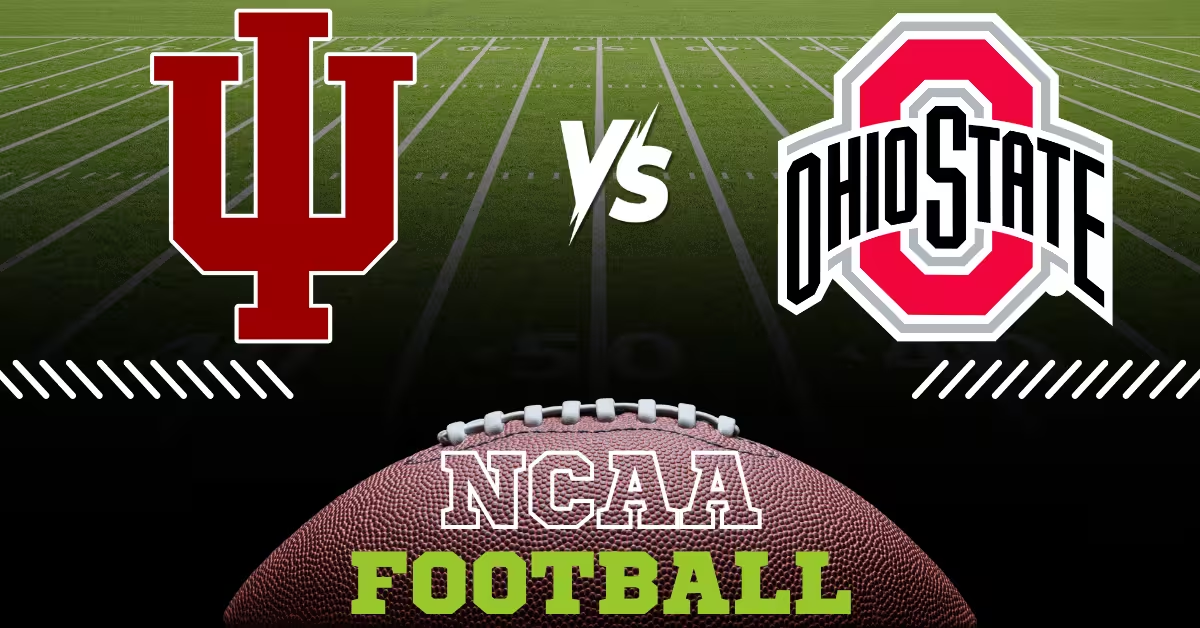How to Spot and Exploit Overreactions in Betting Markets
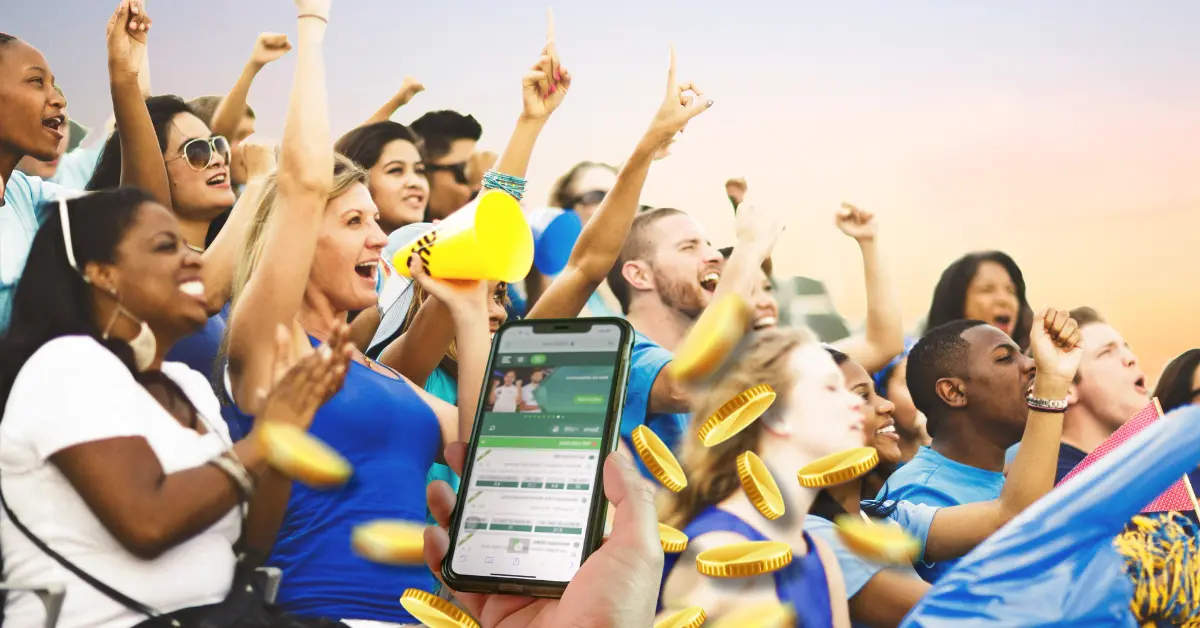
Anyone who has ever bet on sports has fallen into the recency trap at one point or another—no exceptions.
Recency bias (also called the availability heuristic) is the tendency to overweight recent events when judging probability. In sports betting? That means if Team A just thumped its last three opponents, we might assume that they’ll keep winning, even if the long-term data suggests otherwise.
Media coverage often highlights the latest big win or upset, making it easy for us not to be swayed by the memory of recent dominance. This can lead to big mistakes, as bettors will push a hot team’s lineup or dump a team after one bad game, distorting the odds.
A good example of this is when the NFL’s Pittsburgh beat Houston, Indianapolis, and Baltimore, so the public bet them up as 4.5-point favorites against the 1–8 New York Jets. It was pretty hard to think that the Steelers would lose, but the Jets pulled off an upset and beat them 20–13.
That’s recency bias in action; one string of wins made everyone flat-out ignore the longer-term trends. In betting markets, these kinds of overreactions create solid opportunities for patient, analytical bettors. By understanding how recent events can mislead the crowd? You can spot when lines are too high or too low.
We are gonna explore what causes those overreactions, how sportsbooks exploit them, and how you can use them to your advantage. We’ll cover real-world examples from the NFL, NBA, and March Madness, explain some good betting strategies, and point out the most common psychological traps to sidestep. You’ll be honing your contrarian instincts: when the public goes all-in on the latest narrative, you’ll know better and pause to look for hidden value!
What Causes Overreactions in Betting Markets?
Betting markets can blow hot and cold for a lot of reasons. The main drivers of overreaction? Psychological and informational. Below are the most common culprits:
Recency Bias / Availability Heuristic
People naturally put more weight on recent results. A big win last week or a star player’s hot streak can seem more predictive than it really is. Sportswriters and broadcasts also feed into this: studies show that media coverage only focuses on the most recent games, player performances, or incidents, which then causes bettors to overemphasize recent events and ignore broader trends. In practice, this means a team that just crushed an opponent might see its odds shorten drastically, even if nothing fundamentally changed about their matchup.
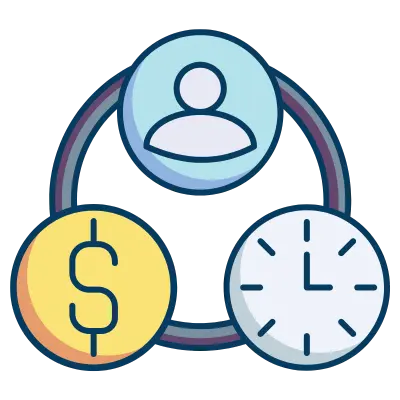
Media Hype and Narratives
The press adores a good storyline—a young phenom, a veteran on a roll, or a QB comeback. Dramatic headlines and social media chatter inflate a team’s perceived chances. According to betting analysts, vivid or over-covered media stories become more accessible in memory and can disproportionately influence betting decisions.
For instance, if a star player’s turnaround passes get 24/7 coverage, bettors might rush to back that team. This hype-driven demand shifts the line, often beyond what stats justify.
Injury and Personnel News
News about injuries or lineup changes can trigger knee-jerk reactions. If a star quarterback is ruled out on game day, the public often jams bets on the other team. Research confirms this: bettors were found to back the visiting team 3.1% more when the home team’s starter was injured.
Conversely, if the home team loses its QB, bettors back them 2.1% less, even though teams playing without their star often still cover a reasonable part of the spread. In other words, bettors tend to overreact to an injury and abandon a team that might still be decent. Sharp bettors, aware of this bias, are able to exploit the inflated line on the opponents.
Gambler’s Fallacy and Hot-Hand Bias
People look for streaks or reversals in ways that don’t make sense statistically. If a team just won five in a row, fans might think “they won’t lose the sixth” (gambler’s fallacy) or that they’re “on fire” and will just keep winning (hot-hand fallacy). Neither is guaranteed. Sports outcomes aren’t strictly random, but treating each game as dependent on a previous win or loss is usually dead wrong.
A classic example is a baseball team that has a long losing streak; they aren’t due for a win; every game still has its own probability. Yet many bettors make decisions as if “momentum” alone predicts the next result.
Confirmation and Emotional Biases

Once a fan believes something, they tend to cherry-pick info. If you love Team X, you might notice all the glowing stats and ignore warning signs about them. This confirmation bias causes bettors to remember or seek data that supports a hypothesis and disregard contradictions. Emotions also play a big part, as it’s easier to back a beloved underdog or “script” than to take a look at the math. Fan loyalty and wishful thinking can drive support (and line shifts) for a team that isn’t objectively strong.
Herd Mentality
When a lot of bettors jump on the same side, more will follow (“everyone else is doing it”). Bookmakers call this the “mob” effect. A public herd will back the popular team or a big favorite, even at poor odds, simply because it feels like a sensible move. And piling on can push the line well past fair value.
Betting Promotions
Lines can be skewed by promotions or parlays, too! If a sportsbook has a special offer that encourages one side, it can distort the market temporarily.
Any time the crowd gets swayed by recent memory, hype, or emotion, odds can overshoot. Overreactions are usually the strongest right after a big headline event, like a shocking upset, a major trade or signing, or a record performance. Smart bettors recognize that these are the moments when lines move the most and where the value is hiding.
How Sportsbooks Take Advantage of Overreactions
Bookmakers are fully aware of these biases and will often exploit them for profit. They don’t just set lines to split bets 50/50 (the old myth of “balancing the book”). In fact, research shows that bookmakers are using recency bias to encourage bets on what they perceive will be the “losing’ side.” That is, the line might be tweaked so that the “smart” or less popular side becomes the more attractive value play, while the majority backs the other team at worse odds.
For example, imagine Team Y has been on a heater and is a 10-point favorite by true power rankings. Because of the hype, the public overwhelms the books with bets on Team Y anyway. A smart sportsbook could move that spread to 13 or 15 points, knowing full well that recency bias is going to push bettors to the hot team. In one reported case, researchers saw a line where the true spread was about 10, but the sportsbook posted -15 because they expected heavy betting on the favorite.
When bettors blindly took that extra 3 points of (illusory) cushion, the underdog actually covered more often than bettors expected. The sportsbook ends up profiting not just from its built-in vig (house commission) but from the extra amount of action it lured on the favorite side.
Legendary odds-maker Gerry Goldstein once said, “They [sportsbooks] always try to push you in one direction…They’re trying to maximize their profit.” In practice, this means that lines are not neutral. A line may already incorporate the sharp (informed) money and then further adjust for expected public money. If Big Team Z just got a franchise quarterback, the opening line may shorten before even a single public bet is placed, anticipating the hype. Then, as casual bettors pile on, books might pivot the other way to get action on the dog.
A real scenario looks like when, early in a season, the Browns were 10-point home favorites over a Dallas team missing its star QB. As expected, the public bet on Cleveland heavily because they were on a winning streak. The sportsbooks then jacked the spread up to 15 points, knowing full well that recency bias is going to push bettors to the Browns.
A lot of bettors took Cleveland at –15, convinced the streak would continue. But if you looked at the bigger picture, Dallas, without their quarterback, still had a shot to keep it close. The books basically made the line bigger to guarantee a profit. Even a little shift like that can turn a modest favorite into a trap.
Oddsmakers often inflate favorites and deflate underdogs when they expect the public to overreact. This goes beyond merely getting equal money on each side. Famous statistician Nate Silver noted that the idea “that sportsbooks seek to balance their books” is mostly a myth.” Instead, they craft lines to exploit bettor mistakes. If a majority is leaning one way, the “other” side might carry hidden value.
In effect, sportsbooks are betting against the overreactions of the crowd. They know that bettors as a group will pay the vig and more by chasing hype. The lines will reflect that, so watch for lopsided lines or spreads that move counterintuitively!
How to Spot Overreactions in Real Time
Knowing why overreactions happen is, of course, useful, but how do you catch them as they happen? The following are some practical tactics for getting a good read on the market:
Significant line shifts can be a red flag. If the spread or moneyline moves sharply in one direction without a clear fundamental reason (no injury news, no weather change, etc.), it likely reflects an emotional reaction. Look for odds that shift dramatically due to public betting rather than fundamental changes in team strength. Like if a team suddenly opens as a 10-point favorite and by midweek it’s –14 with no new injury reports, ask “why?” In most cases, the public has jumped on board, forcing the line. An unexplained big move often means value has popped up on the other side.
Most sportsbooks and gambling sites now report two metrics: the percentage of bets (public%) and the percentage of money (money%). Sharp bettors generally bet bigger amounts, while casual “square” bettors make smaller wagers. If 80% of tickets are on Team A but the bulk of the money is on Team B, that gap signals a contrarian play. In other words, if heavy favorites attract tons of small bets but pros are placing big bets on the dog, it’s worth considering taking the dog. Tools like Action Network or specialized apps will show you these splits in real time. Watching for a large discrepancy (e.g., 70–80% of bets on one side) can help you see where the crowd is overruling the wisdom of sharps.
Be very suspicious of super popular teams or players who are drawing overwhelming support. Some analysts note that high-profile teams often attract public money regardless of true probability. If the odds seem unusually short for a favorite (or long for an underdog) compared to statistical models, the public might be inflating them. For instance, a top NFL team on a hot streak might be bet down to an extreme line despite having only an average matchup. Likewise, an underdog getting near double-digit points could actually be a good bet if the public has dismissed them unfairly.
When everyone is talking up one team, saying “This is gonna be their year!” it can and does show up in the lines. Market pros strongly suggest avoiding bets based solely on hype. Instead, focus on objective factors: home field, pace of play, and defensive metrics. During Super Bowl XLVIII, the Denver Broncos were hyped up as historic offensive favorites. The public backed Denver so hard that the line moved way in their favor. Sharp bettors realized that the market was overconfident and bet on Seattle instead. The Seahawks won 43–8, proving that Seattle’s chances had been sorely underestimated. If you’d relied only on the Denver narrative, you’d have missed the value on Seattle. Trust the numbers and fundamentals over the headlines.
Not all books adjust lines equally or at the same time. One sportsbook might move a spread quickly, while another lags. It pays to shop around! For example, if Team X opened at +7 at -110 juice but one book offers +7 at -105, that slight discount is the better deal. Likewise, sometimes an overreaction subsides as the game nears kickoff. A smart bettor will wait out an early line spike and take a better price when it cools off. Always get the best available price before you place a bet.
By being aware of the signals—extreme moves, lopsided betting percentages, and narrative-driven lines—you can catch a market overreaction as it happens. The key is to look for dislocations between the line and the true probability of outcomes. Whenever the public seems to be steering the ship, stop and ask if the odds reflect reality. Often they don’t, and that’s where the edge is!
6 Betting Strategies to Exploit Overreactions
Once you’ve spotted an overreaction, the next step is to act on it in a smart way! Below are some tried and true strategies to capitalize on skewed lines:
- Fade the Public: Betting against heavily backed teams (fading the public) is a classic contrarian strategy. If the majority of casual bettors are on one side, the other side may be undervalued. If you see the public piling onto a popular team or a home favorite, consider betting the other side (especially with points). Sharp bettors follow this logic. One study of early NFL/NCAA games showed that underdogs won or covered 63.8% of the time when they received less than 40% of the public bets. In plain terms, when the crowd ignores an underdog, that dog tends to outperform expectations, which suggests that riding with the popular team can be a long-term loser.
- Spot Overpriced Favorites: Sometimes the best value is just to take points on an underdog that was hyped. A well-known example is research that was done on NFL games with backup quarterbacks, which concluded that underdogs get many of those points and cover far more often than most bettors realize. Analysts recommend always taking the points when a team is playing without its starting quarterback. Those teams rarely win outright, but they cover the inflated spread way more often than expected. The sportsbook knew this, but bettors were so scared of facing a backup that they gave away extra points. Betting the underdog in those cases turns that scenario into profit for you.
- Bet Early or Late as Needed: If you catch an overreaction early (before lines adjust back), you can lock in a favorable price. Conversely, if a line spikes too high to your taste, you could wait a bit. Say that news breaks that an injury might be worse than was first thought, the line might overshoot and then correct once more info is made public. Waiting for that correction can yield a much better price! The principle is to bet when your estimated probability exceeds the implied probability of the odds. If an overreaction makes the implied win chance of a team lower than what your analysis suggests, that’s your moment.
- Line Shopping: Always compare multiple books for the best odds, because even what seems like a tiny difference matters. A sportsbook might list a team at +7 (with -110 juice) while another offers +7 at -105. That half-point of “juice” is the difference between risking $110 to win $100 versus only $105. Over a lot of bets, saving a few cents per dollar wagered does add up. In the context of overreactions, line shopping can mean finding which book has taken more of the heat. If one book has moved a line out while another still shows the old number, the old line might offer hidden value before it catches up.
- Use Data-Driven Models: Keep your own power ratings or statistical models. If your model differs from the sportsbook line, bet where the model gives you an edge. If your ELO or predictive model says Team A is a 3-point favorite but the market lists them at 8, you have a potential +EV opportunity by betting Team B +8. The contrarian strategy here is to trust quantitative analysis over sentiment. It’s an approach that takes discipline and record-keeping, but it can systematically exploit crowds.
- Specialize in Niches: Overreactions tend to be more pronounced in high-profile games (Week 1 NFL primetime, March Madness, big rivalry matches). If you focus on a sport or situation where you’re especially knowledgeable, you can probably spot subtle context that the market misses. Early-season NFL games usually see a lot of overreactions to free-agent signings or rookie QBs. And March Madness, with its seed bias and insane bracket hypes, is infamous for lines that zig when public sentiment zags. By having solid knowledge of one area, you can see when the market has mispriced it based on incomplete analysis.
No strategy will ever win 100% of the time, and contrarian bets can and do lose. But the goal here is positive expected value (+EV) over time. That happens when your wins (when the market corrects) outweigh your losses. Taking advantage of overreactions means you are selectively picking spots where the math favors you, and not chasing every public line shift. The simplest strategy? Fade hype with reasonable caution, and bet the unheralded side when the favorite’s line is fueled by emotion.
Psychological Traps to Avoid
When you’re ferreting out those market missteps, watch that you don’t fall victim to other biases! Here are the psychological traps you need to watch out for:
- Recency Bias (Again): It’s easy to catch yourself falling into the same exact trap that you’re exploiting, so don’t overreact to recent games. If a team just gave up a big lead and lost last week, don’t automatically assume that they’ll continue the trend indefinitely. Treat each game on its own merits, not as a continuation of a short streak.
- Gambler’s Fallacy: Games are mostly independent, so don’t bet on a team just because you feel like it “deserves” a win after a string of losses or vice versa. A team losing five in a row isn’t any more or less likely to lose the sixth—past outcomes don’t change the fundamental odds. Likewise, if you’ve won a few bets in a row, don’t size up your wagers thinking you’re on a “hot streak.” The odds of your next pick are only tied to its own value, not to your recent run.
- Hot-Hand Fallacy: Don’t assume that a player will continue a scoring streak just because they’ve been “on fire” as of late. Similarly, don’t dip on a player because of a cold spell. Statistics, especially in large samples, show that long streaks tend to regress to the mean. Don’t give extra credit in your model to any short-term trends.
- Confirmation Bias: When the line moves away from your favorite side, don’t immediately assume that the market is right. Check all of the data! Conversely, if a line drifts in your favor, don’t let excitement carry you away. Always ask yourself this: “What info am I ignoring?” We all like to remember or look for the data that supports a hypothesis and forget the rest, so be your own devil’s advocate.
- Anchoring Bias: The first number you see can unduly influence you, which can anchor you to an opening line or a gut feeling. If a sportsbook posts certain odds, you might consider that to be gospel and not want to stray from it. But lines change for a reason. Even the most experienced bettors can be fooled by the bookmaker’s starting price: if a player’s chance is really 50/50 (true odds +100), a first posted line of +245 can make everyone think his chance is way lower. In practice, you should be reassessing a game on its own merits, not just by how you first saw it.
- Emotion/Fan Bias: Never let loyalty override logic. Betting on “my team” or hating the opponent can cause you to let value bets slip through your grasp. If your fav team is the one that just won big, be especially skeptical of the line—that’s when your own bias could be telling you that “they’ll win again.”
- Herd Mentality: Just because “everyone is on one side” doesn’t mean that they’re right. Sometimes the smartest move is the unpopular one. Ignore that temptation to join a public parlay or a trendy pick. Remind yourself that bookmakers usually set lines because they know that the herd will go that way.
- Outcome Bias (Hindsight): After a surprising result, it’s pretty common to say, “I knew that would happen” or “I should have seen it.” Hindsight is 20/20, and don’t get stuck on this. Learn from the error and move on. Focusing on what you could have done better (maybe you didn’t gather enough info) is more productive than telling yourself that the outcome was obvious.
- Chasing Losses: If a contrarian bet didn’t work out, don’t immediately double down on the next in the hopes of making up for it. Be disciplined—every situation is different, so look at every bet with fresh eyes and analysis!
Real Examples of Market Overreactions
It’s really helpful to see real examples of how market overreactions happen and the fallout. Below are where the betting market (and the public) overreacted, and what a smart bettor could have done differently!
Pittsburgh vs. New York Jets (NFL, 2014)
As mentioned, Pittsburgh had just crushed several opponents and was bet down to –4.5 against the 1–8 Jets. Public sentiment was that the Steelers would annihilate the Jets. Pittsburgh lost 20–13, and this was a textbook case of recency bias: bettors saw the previous blowouts and assumed another win was in the works.
A disciplined bettor might’ve taken the Jets with the points, recognizing that no team is unbeatable and that an 8–1 team losing big meant the Steelers were indeed vulnerable.
Buffalo vs. Jacksonville (NFL, 2021)
The Buffalo Bills schedule right now:
BYE
Dolphins
Jaguars
JetsEvery team has a BYE Week.
Buffalo has a BYE Month. pic.twitter.com/XjsjW2VjJl
— Kyle Brandt (@KyleBrandt) October 27, 2021
The Buffalo Bills were so hyped as Super Bowl contenders that oddsmakers made them 15-point home favorites against the Jaguars, which was the largest favorite in years. The public heavily backed Buffalo, but Jacksonville won the game. From 1996 through 2017, 15-point underdogs never won an NFL game, but in 2021? It happened. Bettors who assumed Buffalo’s high-powered offense guaranteed a blowout were snookered, and it showed that a seemingly “sure” outcome can be upended.
A better approach? Bet on the Jaguars +15 (or a low total) when the line shot up, instead of expecting the Bills to cover the huge spread.
Milwaukee Bucks vs. Miami Heat (NBA, 2020)
In the NBA playoff bubble, the 66-win Bucks were loaded with stars (plus a $10-plus average margin) and had both league MVP and Defensive Player of the Year. Vegas made them the heavy favorites over the Heat. The public assumed a Bucks series win was all but guaranteed, but Miami came out on top. It was a case of modern market efficiency failing under unique conditions (no home court, small sample).
Bettors who impulsively took the Bucks ignored all of the signs: Miami was a strong matchup even if they weren’t heavily favored. A contrarian bettor could have seized the value on Miami after the line went as low as it did. It’s a stark reminder that even statistically dominant teams can lose short series, especially when circumstances change.
Memphis vs. San Antonio (NBA, 2011)
This is a classic upset: the 8-seed Grizzlies beat 1-seed Spurs in the first round. The Spurs had a 99.4% calculated chance to win the series. If you’d bet San Antonio en route or during the game, you would have lost. Bettors who expected a sweep on paper were dead wrong, and the series showed that long odds favorites can fall.
If any smart money played it, it would have been on the Grizzlies, but most players and bettors look at an 8–1 matchup as a done deal. In retrospect, this was a mega-win for anyone who saw the mispriced market.
UMBC vs. Virginia (NCAA Tournament, 2018)
This was the penultimate March Madness shocker. Virginia was the No. 1 overall seed and was a 20.5-point favorite over 16-seed UMBC. Some sportsbooks didn’t even bother to list a moneyline for Virginia because the result was deemed nearly impossible. And then UMBC won by 20. Here’s how the betting market reflected bias: in one Vegas book, 25 people bet on Virginia at -10,000 odds (they risked $10,000 to win $1) because it was “safe.” Almost the entire betting public was expecting a blowout. A couple of bettors saw it differently: a gambler parlayed UMBC and another underdog (Marshall) for $40 and turned it into $7,280! Yes, that’s a rare bet, but it paid off in spades.
The lesson here? The market assigned virtually zero chance to UMBC, ignoring the unpredictable nature of the tournament. Betting on the dog (or on “under” with a prop bet) in giant mispricings was the right value play.
Baylor vs. Gonzaga (NCAA Championship, 2021)
Baylor was a 4.5-point underdog against unbeaten Gonzaga, with moneylines at +160 (Baylor) and -213 (Gonzaga). Everyone assumed that Gonzaga would finally finish the job. Baylor not only covered the spread but won handily. Bettors backing Gonzaga were rewarded poorly: a $1,294 wager on Gonzaga at -10000 would have netted only about $13, which is a comically small upside.
A smart gambler saw that +160 on Baylor was a huge overlay. Ignoring the hype on Gonzaga and taking Baylor (either on the line or moneyline) was the value move. The market had undervalued Baylor because it was biased by Gonzaga’s unbeaten narrative.
When Not to Bet Against the Market
Sure, contrarian betting can be profitable, but it’s not a guaranteed winning strategy. Sometimes the market is right, and fighting it is an uphill battle. Below are the examples of when you should hold back from betting against the public:
- Legit Info Surfaces: If a line moves on solid news? Trust that move. Like if a star player’s injury is confirmed or one unexpectedly returns from an injury, the odds will adjust for a real change in team strength. Overreacting to that move and betting the opposite would be unwise. If the market is shifting because the underlying probabilities have truly changed (not just hype), don’t ignore it.
- Heavy Sharp Money: Professional bettors (“sharps”) usually move lines by placing big bets, so if you notice a line shift by a lot, it was most likely driven by “steam” or sharp action, so be cautious about fading it. Sharps tend to uncover value; if they swarm a side, it usually means that they’ve found reasons others missed (like a hidden injury or matchup advantage). In these cases, the line move is not an overreaction to be exploited, but a correction that should be respected.
- Lack of an Edge: Only bet if you actually have an edge. If your analysis suggests that the market line is fair, like when your power ratings agree with the current point spread, it’s usually better to sit this one out. Not every game offers a mispricing. Sometimes the public and sharps align, and the line is basically efficient. Chasing action in those situations rarely, if ever, pays off.
- Low Information Games: If you don’t have time or data to analyze a particular matchup, don’t force a contrarian bet. Opportunistic bets should be based on info, not guesswork. It’s fine to skip a game if you’re unsure, rather than fade randomly.
- Thick vs Thin Markets: Be super careful in markets that have low liquidity (like minor league props or obscure bets). Overreactions can be really extreme in the smaller markets, and sometimes lines are incorrect due to bookmaker error or not a lot of action. Unless you have a very good reason to bet (and a good sportsbook), it’s probably not worth the risk.
- Emotional Decisions: Don’t go against the market just to be contrary. If your reasoning is driven by pride or “defying the crowd” rather than solid analysis, that’s a trap that you set for yourself. If you hate the narrative around a team and decide to bet against them just for that reason, you’re not betting smart, you’re betting emotionally!
Conclusion: Overreaction = Opportunity If You Know What to Look For
The crowd’s knee-jerk reactions create the chinks in the armor of otherwise efficient markets when it comes to sports betting. Recency bias and emotional betting can push odds way beyond what the actual probabilities justify. But guess what? For the informed bettors out there, this is great news: every overreaction is an opportunity hiding in plain sight.
By understanding the causes of these market swings, from hype cycles and media narratives to injury scares and cognitive biases, you’ll know how to spot when a line is inflated or deflated. Monitoring line movements, betting percentages, and sharp action helps pinpoint these moments in real time. Equally important? Having your own analysis ready and waiting with stats, power rankings, or modeling, so that you can easily and quickly evaluate if the market is in line with the facts or out of sync with them.
You don’t have to always bet against the public just because. The goal is to bet value, meaning you only act when the market’s price underestimates a team’s chances (and therefore offers positive expected value). When everyone else is hyper-fixated on the latest sensational headline, take a minute to check if the odds really reflect the situation. When you separate emotion from analysis, you can make bank off of what others miss.
The calm, cool, collected, and analytical bettor can thrive in markets that swing wildly. Overreactions are never guaranteed winners, but they do have some predictable oddities. If you patiently and thoughtfully identify them, you can turn public mistakes into your profit. And that is how an apparent overreaction becomes a real betting opportunity!

Matthew specializes in writing our gambling app review content, spending days testing out sportsbooks and online casinos to get intimate with these platforms and what they offer. He’s also a blog contributor, creating guides on increasing your odds of winning against the house by playing table games, managing your bankroll responsibly, and choosing the slot machines with the best return-to-player rates.

